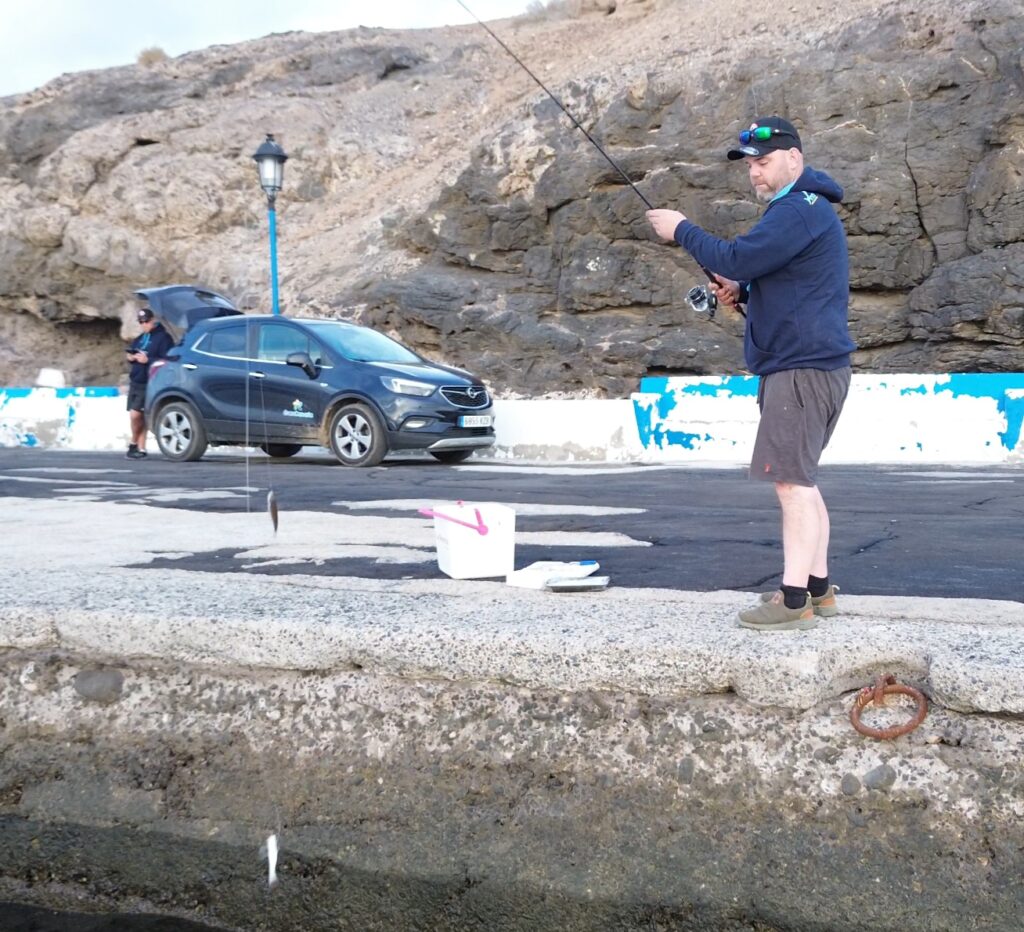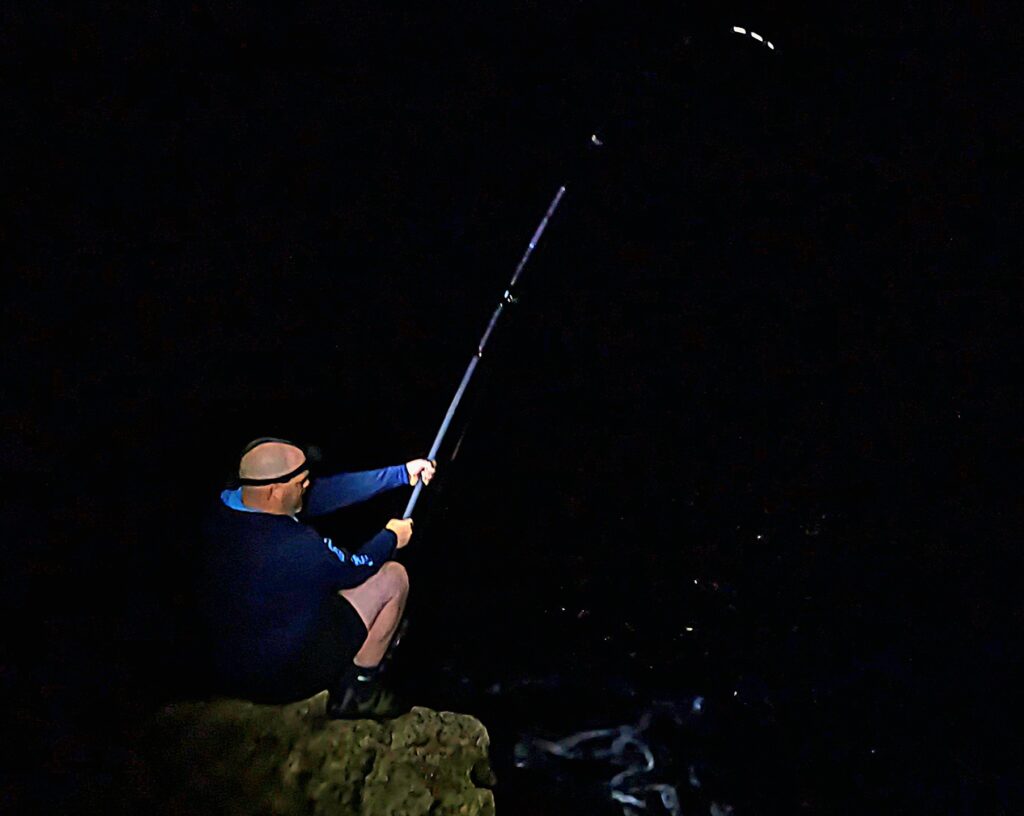Thanks to Ben Davies who gives us the lowdown on what to expect from a fishing holiday to Feurteventura in this week’s guest blog….
Fishing a new venue is always exciting and even a little bit daunting at times, so going over to a country that you’ve never been to before and catch new species of fish is a whole new level. Last year, myself and David Bowring had been in conversation about doing a bit more traveling with the fishing. Regularly fishing the Bristol channel and our main fishing being on the rays, we thought we would take it up another level and plan a week’s fishing in Fuerteventura, Canary Islands- home of the giant stingrays.

Provisional Planning
Our first information hunt started with Youtube. There is some really useful information there but not quite everything we needed. Luckily we know some experienced anglers that fish the island regularly and they kindly gave us information on what we needed to know.
Now we had some information to work with and most importantly, the locations of the fishing venues.

We had an idea where we will mainly be fishing so we looked for apartments near. This helped cut down travel time and as a result gave us more fishing time!
Next we looked at flights and how to get all the equipment out there – rods, rod stands, fishing boxes and so on.

Flights
When we booked the flights we let the airline company know that we were bringing oversized sports luggage. This allowance was two items per person – rods in a rod tube and our fishing boxes. The rod tubes we used were the bazooka tubes in the large size. We certainly felt a bit nervous at airport security, what with us carrying a long tube with ‘bazooka’ stamped on the side into an airport, but all was well.

With our boxes we packed as much into them as possible, mainly to protect the reels and headlights we had packed. Different airlines give you different weight allowances so we double checked before we left so as not to be stung with excess charges at the airport.
We wrapped duct tape around our boxes once we were confident we had packed everything we needed and added a suitcase strap with a padlock for extra security.

Tackle
Rods of choice were the famous big fish tamers- Century Eliminator T1000’s paired with Penn Slammer 4 10500 reels. The main-line we used was the Daiwa J-Braid in the 87lb and then a 120lb mono leader joined with an FG knot. At the business end we used 6’ pulley rigs constructed with 200lb Varivas Heavy Rig Nylon, both for the body and the hook length, with an 8/0 Varivas Circle Hook and a 500lb braid dongle.

It was only after day one when we were left feeling battered and bruised that we realised just how important fighting belts are. We both headed for the local tackle shop and purchased one. Lesson learned! There was no tidal pull what so ever and most of the fishing venues were clean ground, sandy beaches or from flat ledges onto sand. Although there wasn’t any tide pull we still used 7oz and 8oz leads to help tow the large baits out when casting and to help set the hook.
One of the famous venues (Salinas) is a flat rock mark that drops off into super deep water. This is because the island was made by volcanoes exploding and when the hot lava hits the cold water it sets it to stone leaving some very great super deep fishing venues – but don’t worry, the volcanos are no longer active. Studded boots on venues like Salinas proved to be invaluable. Playing a big fish, it’s important to dig your feet in as well as possible.

General Pointers And Advice
Set that drag! These fish take off like a fighter jet, some of them taking 100m plus of line on their first run. And you just got to let them, there is nothing you can do about it, it’s literally insane the power they have! And this is where it gets painful. You have to bring them back in. You really do have to keep them moving otherwise they will suck themselves down to the seabed just like how a limpet sucks its self to a rock.
The problem is it’s impossible to bring in a 200-300lb stingray 200 meters in constantly. You really do have to pick and choose when to put the efforts in. When they’re running, just hold on and try and rest, switch arms and positions and get ready for your turn to try and make some ground. It’s a must to have a minimum of two of you there.

With these large powerful fish running, they can swim left and right, so it’s ideal to have a friend wind in the other rods to stop tangles.
Do not forget their well known weapon! A large sting on their tails. They use this to whip at you and trust me, you don’t want a sting from one of those. Team work makes the dream work – We had a two man method, one of us holds the tail with a good grippy glove whilst the other unhooks.We found long pliers worked better than a Tbar because of the angle and it’s impossible to lift up these big monsters.

Bait
The supermarkets do have fresh fish counters but we found they weren’t very consistent with stock. We found a nice little jetty where we could catch fresh bait (boga).
With size 8 hooks we used very small strips of squid to catch these small silver fish and easily filling up our cool box ready for the nighttime tide.
With lots of small species out there, don’t be afraid to make some large baits – more so make layers – small fish peck on the outer layer creating a bigger scent trail leaving the layer underneath intact. I also noticed the stingrays were throwing up octopus legs, I looked at the fish counters but I couldn’t see any octopus there but there were some super large squid. I used my knife to cut long thin strips out of the squids body to create tentacles to add to my bait, it can add movement, keep the small peckers busy and maybe use them to make a bit of a disturbance.

These large fish are not always at distance, they come in very close into the shallows looking for fish to feed on. The one evening we noticed how many small fish were right on the waters edge – Dave had an idea of dropping the bait on the waters edge, not even a lob! Moments later his rod goes tearing off – resulting a 70lb diamond ray.
We found that mostly all of the better fish came out around low water. We would still get to the venue 4 hours before low water and put out some baits on the big rods but also use the time to catch fresh bait before prime time on some light spinning rods.
An hour before to what we had pencilled in as “prime time” we’d get some of the fresh bait we’d caught that we kept fresh in a rock pool or in the cooler box and set them up onto large 8/0 full circle hooks and dongles and cast the baits into different areas to cover the most ground possible. With the fresh baits out and the rods on the tripod and the drag set as light as possible – we sat back with anticipation and a dream of what the night would bring
Summary
1) Don’t over over complicate
2) Plan in advance
3) Make sure your knots are tripple tested
4) Do not scrimp on cheap tackle
But most importantly- take in the scenery and enjoy!
Ben.

